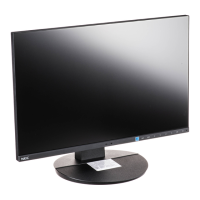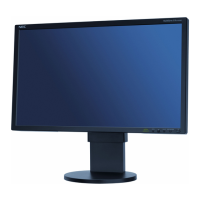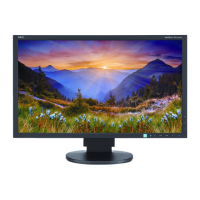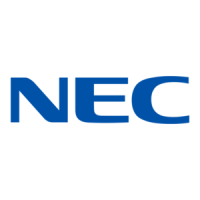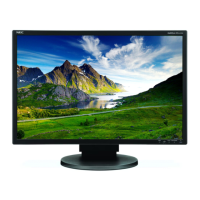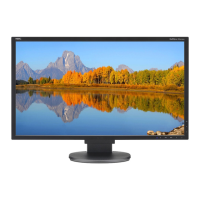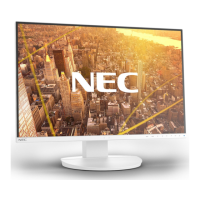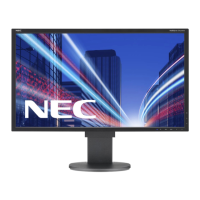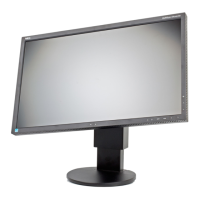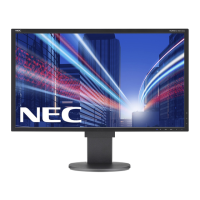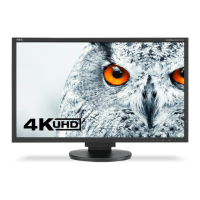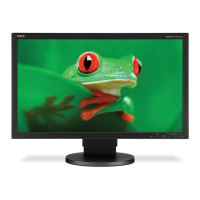
Do you have a question about the NEC MultiSync EA232WMI and is the answer not in the manual?
| 3D | No |
|---|---|
| Aspect ratio | 16:9 |
| Response time | 14 ms |
| Display surface | Matt |
| Display diagonal | 23 \ |
| Separate H/V sync | Yes |
| Display technology | LED |
| Vertical scan range | 56 - 75 Hz |
| Horizontal scan range | 31.5 - 83 kHz |
| Contrast ratio (typical) | 1000:1 |
| Display number of colors | 16.78 million colors |
| Display brightness (typical) | 250 cd/m² |
| Supported graphics resolutions | 1920 x 1080 (HD 1080) |
| USB hub version | 2.0 |
| HDMI ports quantity | 0 |
| USB Type-A downstream ports quantity | 5 |
| AC input voltage | 100 - 240 V |
| Power consumption (standby) | 0.47 W |
| Power consumption (typical) | 28 W |
| Certification | CCC, CE, EuP, FCC Class B, EEA/Energy Label, ISO 9241-307 (pixel failure class I) |
| Product color | White |
| Market positioning | - |
| Panel mounting interface | 100 x 100 mm |
| Storage temperature (T-T) | -10 - 60 °C |
| Storage relative humidity (H-H) | 10 - 85 % |
| Operating relative humidity (H-H) | 20 - 80 % |
| Maximum operating temperature range (T-T) | 5 - 35 °C |
| Cables included | AC, Audio (3.5mm), DVI, USB, VGA |
| Sustainability certificates | EPEAT Silver, ENERGY STAR |
| Depth (with stand) | 220 mm |
|---|---|
| Height (with stand) | 379.1 mm |
| Weight (with stand) | 7400 g |
| Depth (without stand) | 71 mm |
| Width (without stand) | 550 mm |
| Height (without stand) | 329 mm |
| Weight (without stand) | 4900 g |
Critical safety warnings and precautions to prevent hazards.
Explanations of safety symbols used in the manual.
Instructions on selecting and using the correct power cord.
Statement of compliance by the manufacturer.
Statements regarding Canadian interference and safety regulations.
Details on FCC rules, compliance, and declarations.
Identification of responsible party, trademarks, and Energy Star.
Essential safety precautions and maintenance procedures for monitor use.
Guidance on understanding and avoiding image persistence.
Tips for optimal monitor positioning to reduce user fatigue.
Advice on maximizing ergonomic advantages during use.
Proper methods for cleaning the monitor's LCD panel surface.
Guidelines for cleaning the exterior cabinet of the monitor.
Description of the monitor unit and its adjustable stand.
List of cables and accessories provided with the monitor.
Mention of the included setup manual.
Instructions for connecting DVI, D-SUB, and DisplayPort cables.
Steps for tilting, lifting, and connecting various cables.
How to organize cables using the monitor's stand features.
Steps for attaching the cable cover to the stand.
Instructions for connecting the power cord and turning on the monitor.
Using auto-adjust, raising/lowering, and tilting/swiveling the screen.
Steps to rotate the monitor screen between landscape and portrait.
Procedures for detaching the monitor stand for mounting.
Instructions for re-installing the original monitor stand.
Guide for mounting the monitor to a flexible arm.
Specifications for VESA arms and stand weight capacity.
Detailed explanation of each OSD control button's function.
How to adjust the display's brightness and contrast settings.
Using auto contrast for image optimization and ECO mode for power saving.
Configuring automatic brightness and selecting dynamic visual modes.
Adjusting image position, size, and color settings for analog input.
Accessing volume, input selection, timers, and presets.
Configuring OSD language, position, lock-out, and hotkeys.
Settings for power saving modes and sensor thresholds.
Information on carbon footprint, cost savings, and currency settings.
Accessing input, resolution, and serial number data.
Understanding "NO SIGNAL" and "OUT OF RANGE" messages.
Details on LCD panel, display colors, sync, and input interfaces.
Comprehensive list of supported resolutions and active display dimensions.
Information on USB hub, audio features, power requirements, and consumption.
Monitor dimensions, height adjustment, weight, and operating conditions.
Features like thin frame, adjustable stand, and USB hub.
ErgoDesign, Plug and Play, and NaViSet software benefits.
IPM system, Multiple Frequency, and FullScan capabilities.
VESA mounting interface and environmental footprint data.
Solutions for display absence and unresponsive power buttons.
Addressing image persistence and "OUT OF RANGE" signals.
Fixing unstable images, low brightness, and LED status.
Troubleshooting no video, improper image size, and no sound.
Procedures for configuring high and low brightness settings for auto adjustment.
How the monitor's brightness adapts to ambient lighting.
Advantages related to ergonomics, image quality, and safety testing.
Information on energy efficiency, material restrictions, and recycling.
Company policy on environmental protection and product recycling.
Details on the monitor's energy-saving modes and power consumption.
Explanation of the WEEE directive and disposal requirements in the EU.
